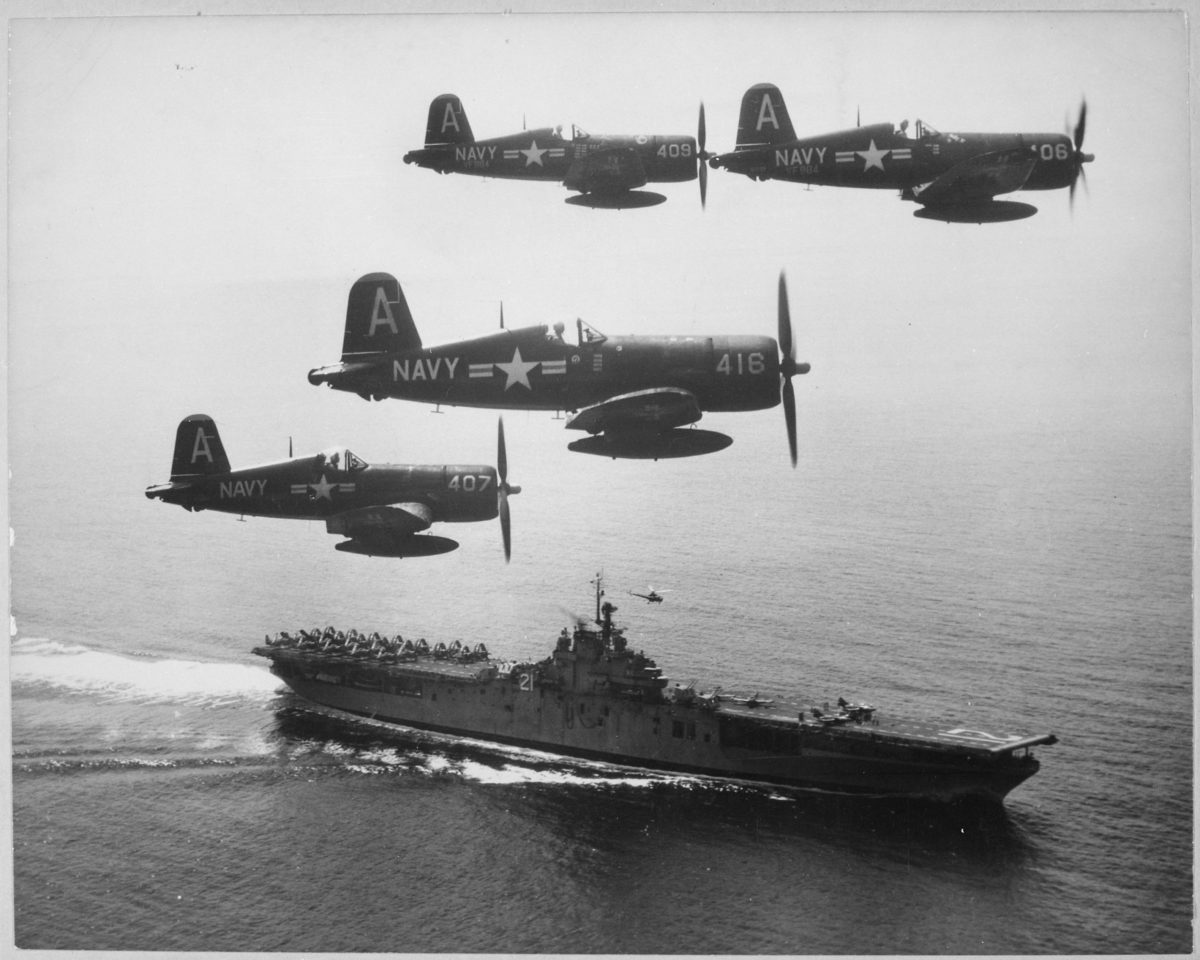U.S. Navy F4U Corsair fighter-bombers returning from a 1951 combat mission over Korea circle the aircraft carrier USS Boxer as they wait for the planes of the next strike group to clear the ship’s decks.
First flown in May 1940, from 1943 on the Corsair saw World War II combat service with the Navy and Marine Corps, Britain’s Fleet Air Arm and the Royal New Zealand Air Force. More than a match for the enemy aircraft it encountered, the Corsair was the mount for scores of Navy and Marine Corps aces (as well as a British Royal Marine and a pilot of the Royal Navy Volunteer Reserve).
The Corsair remained in American and RNZAF service following the end of World War II, and was also adopted by France (which used it in Indochina), Argentina, El Salvador and Honduras. Despite the advent of first-generation jet aircraft, the “bent-wing bird” (so called because of its inverted gull wings) also saw extensive service in Korea as a fighter bomber and night fighter. In both roles the Corsair tangled with — and bested — North Korean MiG-15 jet fighters and several occasions.
The Corsair was withdrawn from U.S. service in the late 1960s and saw its last combat service during the 1969 “Soccer War” between El Salvador and Honduras. Some 30 Corsairs remain flyable worldwide, with several being used in the making of the upcoming Korean War film “Devotion.”
That movie tells the story of Navy pilots Jesse Brown (who in 1948 became the nation’s first African American naval aviator) and Tom Hudner. On Dec. 4, 1950, Brown crashed-landed in Korea after his Corsair was disabled by ground fire. Hudner, his wingman, intentionally crash-landed his own aircraft in an unsuccessful attempt to rescue the trapped Brown, who ultimately died of his injuries. Hudner was later awarded the Medal of Honor for his actions.
historynet magazines
Our 9 best-selling history titles feature in-depth storytelling and iconic imagery to engage and inform on the people, the wars, and the events that shaped America and the world.






